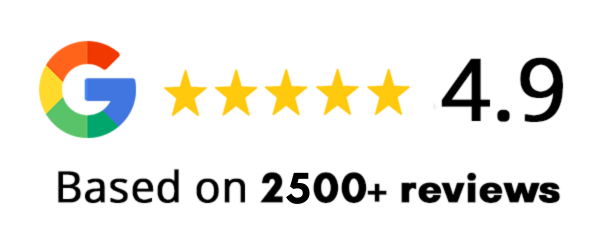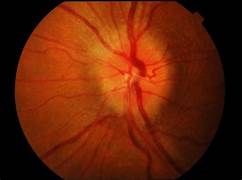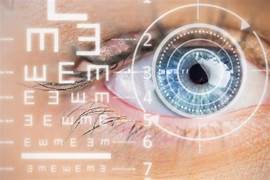Table of Contents
ToggleIf you’re tired of constantly reaching for reading glasses, you might be wondering if LASIK surgery could be the solution. This is a common question among eyewear users and health-conscious individuals alike. Let’s explore the possibilities and limitations of LASIK surgery in addressing the need for reading glasses.
Understanding Presbyopia
Before we can discuss LASIK as a potential solution, it’s essential to understand presbyopia, the condition that typically necessitates reading glasses.
What is Presbyopia?
Presbyopia is a condition associated with ageing that impairs the eye’s capacity to focus on nearby objects. It usually begins to manifest in individuals around the age of 40 and progresses over time. The lens of the eye becomes less flexible, making it difficult to switch focus from distant to near objects—a process called accommodation.
Symptoms of Presbyopia
- Difficulty reading small print
- Having to keep reading materials at a distance.
- Eyestrain or headaches after prolonged close-up work
- Blurred vision at normal reading distance
Presbyopia is a natural part of ageing, and most people will experience it to some degree. Reading glasses, bifocals, or progressive lenses are common solutions, but many are interested in more permanent fixes.
How Does LASIK Work?
To assess whether LASIK can eliminate the need for reading glasses, we first need to understand how the procedure works.
The Basics of LASIK Surgery
LASIK, or Laser-Assisted In Situ Keratomileusis, is a popular form of refractive surgery designed to correct vision problems such as myopia (nearsightedness), hyperopia (farsightedness), and astigmatism. The procedure reshapes the cornea, the transparent front layer of the eye, ensuring that light entering is correctly focused onto the retina.
The LASIK Procedure
- Preparation: Anesthetic eye drops are administered to numb the eye.
- Flap Creation: A delicate flap is fashioned in the cornea using either a microkeratome or a femtosecond laser.
- Corneal Reshaping: An excimer laser is used to remove tiny amounts of corneal tissue, reshaping it to correct the vision problem.
- Flap Repositioning: The corneal flap is repositioned, adhering naturally without the need for stitches.
Recovery and Outcomes
The recovery period for LASIK is relatively short. Most patients notice an improvement in their vision within 24 hours, although full stabilization may require a few weeks. LASIK offers a high success rate, with the majority achieving visual acuity of 20/25 or better.
Can LASIK Correct Presbyopia?
While LASIK is highly effective for correcting distance vision problems, its ability to address presbyopia is more complex.
Monovision LASIK
One approach to managing presbyopia with LASIK is known as monovision. This technique entails adjusting one eye for distance vision and the other for near vision, offering a customized solution for enhanced visual clarity. The brain learns to adapt, using each eye for its designated purpose.
Pros and Cons of Monovision LASIK
Pros
- Reduces dependence on reading glasses
- Quick adaptation for many patients
- Non-invasive procedure
Cons
- May affect depth perception
- Not everyone adapts well to monovision
- Possible need for additional surgical adjustments
- Difficulty with tasks that require sharp vision in both eyes, such as night driving
Blended Vision LASIK
Blended vision, or modified monovision, is a variation where both eyes are corrected for distance vision, but one eye is given a slight under-correction to aid with near vision. This can provide a more natural visual experience for some patients.
Multifocal LASIK
Though less common, some surgeons offer multifocal LASIK, which creates multiple focal points on the cornea. However, this approach can lead to issues with glare and halos, and it may not be suitable for everyone.
Alternative Solutions to LASIK for Presbyopia
If LASIK isn’t the right option for you, several alternative treatments can address presbyopia.
Conductive Keratoplasty (CK)
CK is a non-laser procedure that uses radiofrequency energy to reshape the cornea. It’s less invasive than LASIK and can provide temporary improvement in near vision. However, the effects often diminish over time.
Refractive Lens Exchange (RLE)
RLE involves replacing the eye’s natural lens with an artificial intraocular lens (IOL) designed to correct presbyopia. This procedure is similar to cataract surgery and offers a permanent solution. RLE can simultaneously address various refractive errors and serves as an excellent alternative for individuals who are not candidates for LASIK.
PresbyLASIK
PresbyLASIK is a variant of LASIK designed specifically for presbyopia. It creates multiple zones on the cornea to allow for clear vision at varying distances. While promising, it is still relatively new and may not be widely available.
Corneal Inlays
Corneal inlays are small devices implanted into the cornea to improve near vision. They can be used in conjunction with LASIK or as a standalone procedure. One commonly used inlay is the Kamra inlay, which functions like a pinhole camera to enhance depth of focus.
What to Consider Before Opting for LASIK
Before deciding whether LASIK or an alternative procedure is right for you, consider the following factors.
Candidacy for LASIK
Not everyone is a candidate for LASIK. Factors that influence eligibility include:
- Age
- General health
- Eye health and corneal thickness
- Prescription stability
- Lifestyle and visual needs
Potential Risks and Side Effects
Like any surgical procedure, LASIK carries some risks and potential side effects, including:
- Dry eyes
- Glare, halos, or starbursts around lights
- Overcorrection or undercorrection
- Flap complications
- Regression (partial loss of correction over time)
Consultation with an Ophthalmologist
A comprehensive consultation with an ophthalmologist is essential to determine whether LASIK or another treatment is appropriate for your specific needs. Your doctor will conduct a comprehensive eye examination while discussing your medical history, lifestyle habits, and expectations.
The Road Ahead
While LASIK surgery can significantly reduce your dependence on reading glasses through techniques like monovision or blended vision, it may not be a one-size-fits-all solution. Alternative procedures like CK, RLE, PresbyLASIK, and corneal inlays offer additional options for those looking to eliminate the need for reading glasses.
Ultimately, the best course of action is to consult with a qualified ophthalmologist who can guide you through your options based on your unique vision needs. With the right approach, you can enjoy clearer vision and a more convenient lifestyle.













